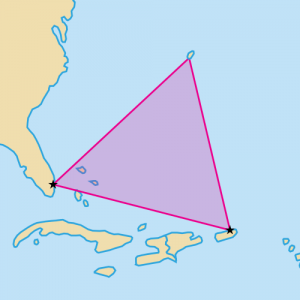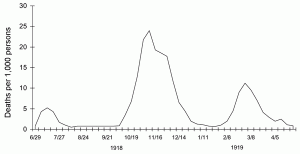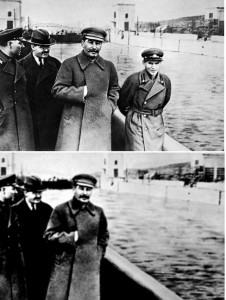The Pop art movement began in England in the 1950s, it spread to the USA in the 1960s, the era fizzled out in the early 1970s. The work produced was popular with the general public due to its strong visual impact and vibrant colour, the images gave instant meaning as the compositions were simple, the subject matter was more down to earth than the abstract expressionism of the 1950s which the public in general did not appreciate or understand, Abstract expressionism in post WW11 America – which also had been in Germany as early as 1946 – did not have wide public appreciation with its anti-figurative aesthetic found in schools like the Bauhaus and in Futurism, a sense of self denial pervaded the work so unlike Pop art. Pop art was seen as ‘a post war expression of a world totally occupied with the pursuit of materialism.’ The austerity of the war years was coming to an end, artists were making a commentary on contemporary society and culture, it attracted dozens of artists who joined the movement.
Pop artists believed that everything is inter-dependent and therefore sought to make those connections in their art work, did they succeeded in integrating society and its culture in the ‘swinging’ sixties? In addition it was a reaction against the status quo, in many ways its aims were similar to the earlier Dada movement which arose from Surrealism with artists like Magritte and Duchamp. Among British pop artists were Eduado Paolozzi, Patrick Caulfield, Peter Blake and David Hockney, their work was less kitschy, more romantic and nostalgic than that of the American artists, they formed the Independent Group. Some artists were making anti-art statements but most had a positive attitude and wished to create new forms of expression, which they did very successfully by taking images from Westerns, science fiction and comic books which the public enjoyed. Art critics were apt to scorn Pop art as having a ‘low brow focus’, it did shatter the divide between commercial arts and the fine arts, it had returned to representational visual communicaton, mass media printing techniques were employed to great effect in particular by Andy Warhol.
As an example of the work produced at this time I have chosen David Hockney’s ‘A Bigger Splash’ so named because it is a larger canvas than an earlier Splash painting, he used the newly invented acrylic paint having painted previously with oils such as in the painting with oils on board of ‘We 2 Boys Clinging Together’ inspired by a Walt Whitman poem. Hockney was living in California at the time where he was teaching and where he was to spend nearly thirty years on and off, it is one of a series of swimming pool paintings and is probably one of his best known works of the 1960s, painted in 1967. We see a flat realistic style, I think the inspiration for the pool was taken from a photograph, the geometric shapes are vertical and horizontal with the exception of the diagonals of the diving board, does it jar the balance, it would have been on purpose? I am reminded a little of Edward Hopper’s ‘Nighthawks’ with the building largely consisting of large plate glass windows. Hockney said in an interview I listened to, recorded at the Royal Academy, that the splash alone had taken him a week to paint with a fine brush, the sky is blue, the pool cool and shimmering, we cannot see the body of the swimmer who has dived deep into the water. The work gives the impression that there is not a thing worrying the painter, not a cloud is on the metaphorical horizon! In fact all was not well for part of the time, one of Hockney’s assistants died of a drug overdose in his studio and Hockney was upset when the relationship with the American artist Peter Schlesinger came to an end although they remained friends, Schlesinger was also one of Hockney’s favourite models. His painting keeps a calm outlook in spite of these setbacks, no extreme of emotion is presented, a middle way found?
David Hockney was born in Bradford, Yorkshire in 1937, he is still painting in 2014 with the same energy. He is a skilled draughtsman, print maker and stage designer, like his father Kenneth he is a conscientious objector, during his time spent doing National Service he was a medical orderly. He trained at the Bradford School of Art and the Royal Academy, he was somewhat of a rebel, he would not write an essay for his graduation on the grounds that his paintings alone should qualify him sufficiently to obtain a degree, the degree was refused at first but later the RCA relented and awarded him a diploma. He exhibited work alongside Peter Blake at the Young Contemporaries. As well as living in California he lived in Paris between 1973 and 1975, he returned to England then moved back to California where he rented a house in Nichol’s Canyon which he later purchased, he still owns property in the USA, also in London and in Yorkshire where he has lived recently, his work is inspired by the Yorkshire landscape. While in America he met other Pop artists such a Andy Warhol, from 1968 onwards he painted friends, relatives, his parents and lovers, he is openly gay, he continues to be constantly interested in the way human vision works. Hockney said ‘the power is with the images’ he is said to regret that conceptual art is now preferred over images and that photography is used more often, saying ‘a camera cannot see what a human can see.’ His views may have been adapted because recent work has been aided by Ipad technology.
Image from wikipedia.




